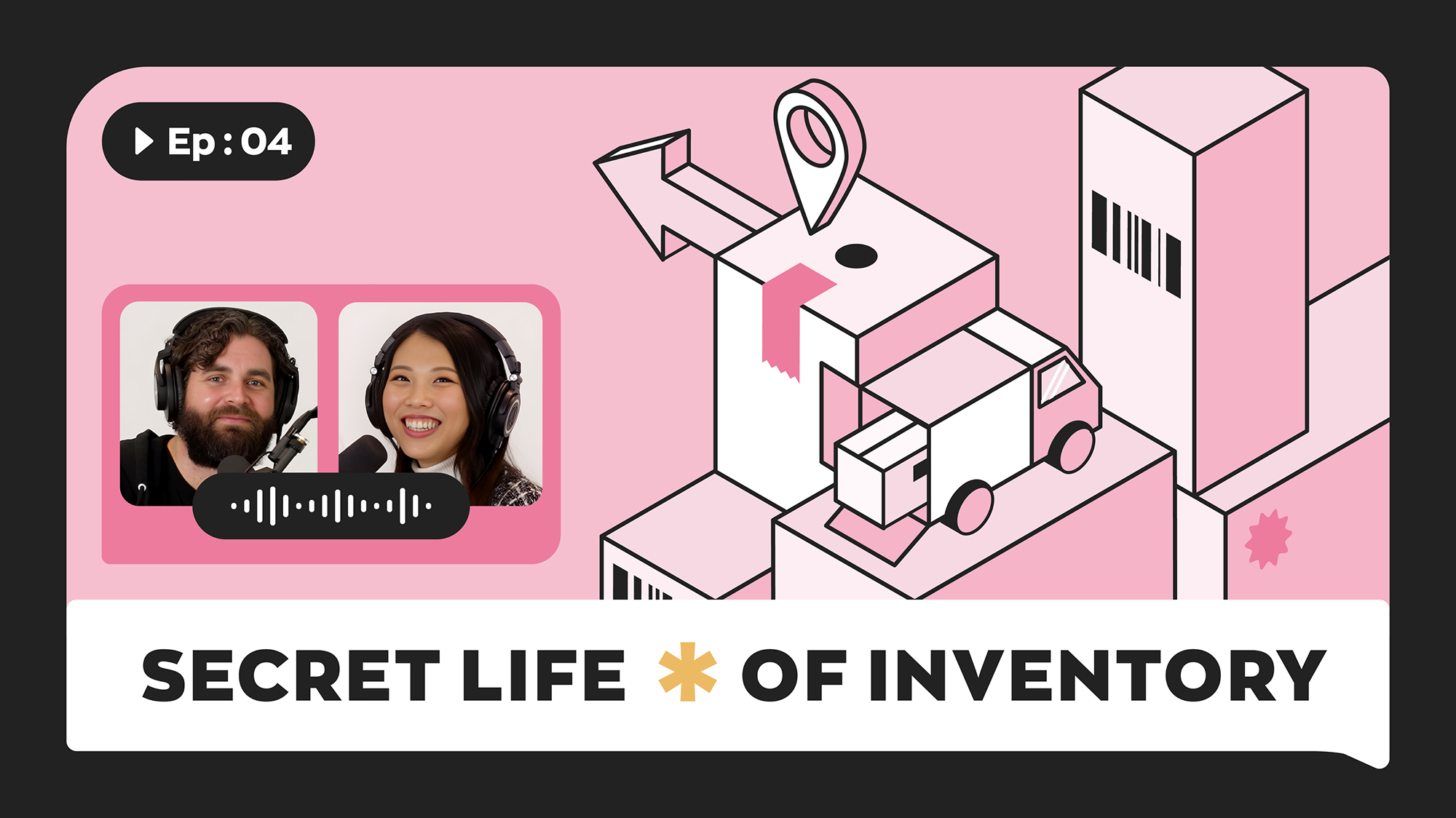The journey products take from creation to our shopping carts is a long and winding road made up of interconnected players. Two of the most commonly confused roles are wholesalers and distributors. While “wholesaler” and “distributor” are often used interchangeably, they actually serve distinct purposes in getting products from manufacturers to consumers.
In the fourth installment of Secret Life of Inventory we get into the nitty-gritty of wholesale vs distribution to help you make sense of who’s who. For a detailed deep dive, watch the full episode below, or read on for a quick recap.
What exactly is a supply chain?
Before diving in, let’s establish what we’re working with. A supply chain is essentially the complete journey any product takes from its creation all the way to the moment it reaches the consumer’s hands. Think of it as a relay race, where each runner passes the baton to another runner closer to the finish line.
The supply chain hierarchy typically flows like this: suppliers provide raw materials to manufacturers, who create finished products. These products then move to wholesalers and distributors, who both operate at the same level of the supply chain, before reaching retailers, and finally landing in consumers’ hands.
The real difference between wholesalers vs distributors
Here’s where things get confusing. Both wholesalers and distributors purchase bulk shipments from manufacturers and break them down into smaller quantities, which they then sell to retailers. So what’s the difference? It all comes down to loyalty and focus.
- Wholesalers are retailer-focused: The top priority for any wholesaler is ensuring their customers, in this case, the retailers, are happy. They do this by supplying them with products that will move off the shelves. If a particular product isn’t selling well, they’ll simply find a different product that does. They’re not emotionally invested in any specific brand or product. They just want to facilitate sales for the retailer one way or another.
- Distributors are manufacturer-focused: On the other hand, distributors work for the manufacturer or product creator and are not overly concerned with the needs of the retailer. Distributors are deeply invested in the success of specific products. They take a much more strategic approach, carefully vetting retailers to ensure products end up in the right locations where they’ll actually sell. They’re not just throwing products at any retailer who’ll take them.
A real-world example: the bookstore scenario
Let’s say you own a bookstore. If you’re working with a wholesaler, they’ll focus on supplying you with books that sell. Any books will do. They don’t care if it’s romance, mystery, or cookbooks, as long as you’re making sales.
A distributor, however, is working for a specific publisher. They want to make sure that their publisher’s specific book sells. That’s their primary concern. Before placing books in your store, they’ll research your location, customer demographics, and store size to determine if it’s the right fit. Would this cookbook work better in your cozy neighborhood mom-and-pop bookstore, or should it be sold in a large department store instead?
Why don’t manufacturers just skip the middleman?
You might wonder why manufacturers don’t just sell directly to retailers or consumers. The answer is complexity and specialization.
Manufacturers are experts at creating products, and that’s already a full-time job. Adding wholesale or distribution responsibilities would mean needing more warehouse space, larger sales teams, additional logistics personnel, and more frequent shipping schedules. It’s simply more cost-effective for manufacturers to focus on what they do best and let the other vendors handle distribution.
Why don’t retailers just skip the middleman?
On the flip side, retailers can’t typically handle the minimum order quantities that manufacturers require. Unless you have an alternate dimension for storage (wouldn’t that be nice?), most retail spaces simply can’t accommodate the bulk quantities manufacturers prefer to sell.
Current challenges in wholesale distribution
The wholesale and distribution landscape isn’t without its challenges. Three major issues are reshaping the industry:
- Direct-to-consumer trends: Ecommerce has made it easier for manufacturers to connect directly with consumers and retailers, potentially cutting out the middleman.
- Demand forecasting difficulties: Predicting what products will sell and in what quantities remains challenging, leading to either excess inventory or stockouts.
- Growing competition: The rise of platforms like Amazon, Temu, and AliExpress has intensified competition, with international players often undercutting traditional wholesalers and distributors.
The bottom line
Understanding the distinction between wholesalers and distributors can help you make better decisions, whether you’re a retailer looking for suppliers or a manufacturer choosing distribution partners. Wholesalers offer flexibility and retailer-focused service, while distributors provide strategic, brand-focused expertise.
Want to dive deeper into the world of supply chain management? Watch the full episode of Secret Life of Inventory to discover more insights about how wholesalers and distributors shape the supply chain.





0 Comments